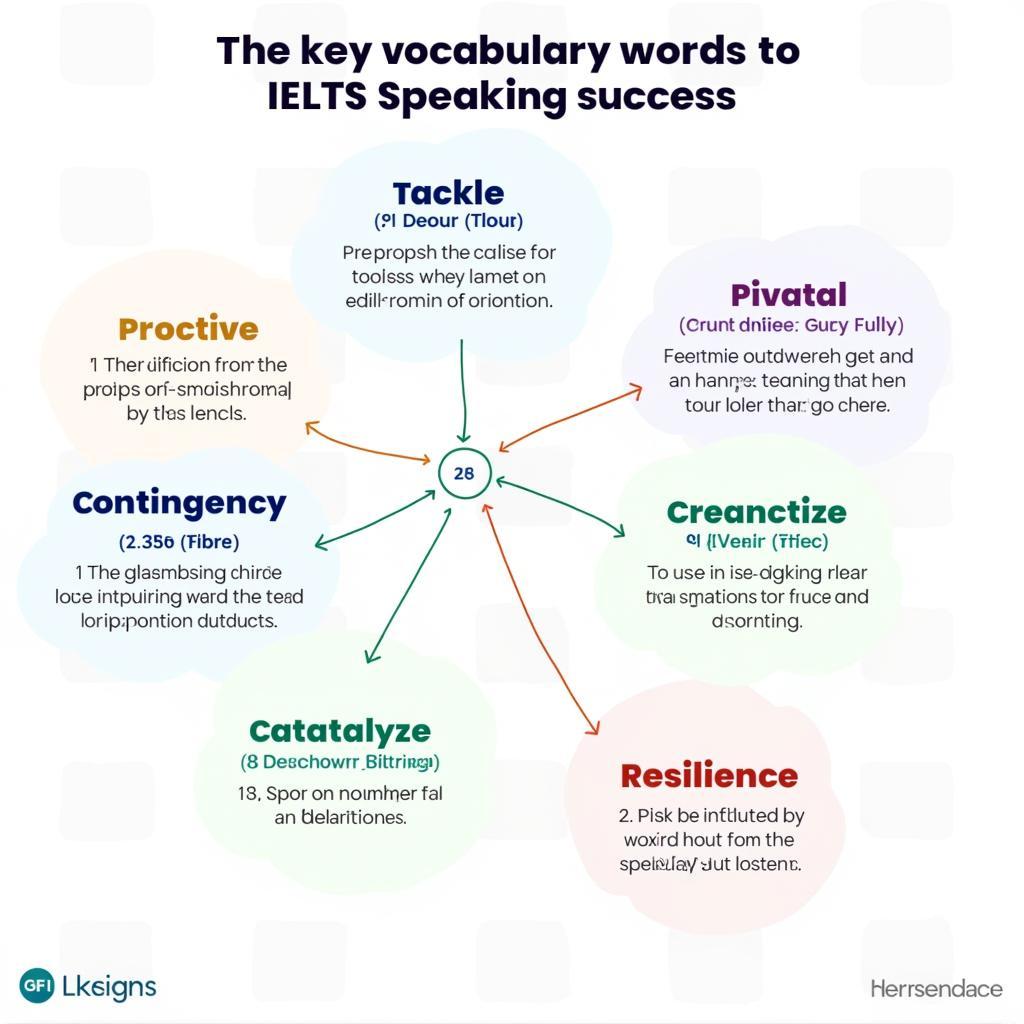The IELTS Speaking test often includes questions about problem-solving experiences, making “describe a time when you had to deal with a difficult problem” a common topic. This theme allows examiners to assess candidates’ ability to articulate complex situations, express emotions, and showcase their problem-solving skills in English. Let’s explore how to excel in answering such questions across all parts of the IELTS Speaking test.
Part 1: Introduction and Interview
In this section, the examiner may ask general questions related to problem-solving. Here’s a sample question with a suggested answer:
Question: How do you usually deal with problems in your daily life?
Sample Answer (Band 7-8):
“I tend to approach problems systematically. First, I try to identify the root cause of the issue. Then, I brainstorm potential solutions, weighing the pros and cons of each. If necessary, I consult with friends or family for their input. Finally, I choose the most viable solution and implement it, making adjustments as needed. I find this method helps me tackle challenges effectively and learn from the experience.”
Part 2: Long Turn (Cue Card)
Here’s a sample cue card related to the topic:
Describe a time when you had to deal with a difficult problem
You should say:
- What the problem was
- When and where it happened
- How you solved it
- And explain why you consider it a difficult problem
 IELTS Speaking Examiner listening to candidate
IELTS Speaking Examiner listening to candidate
Sample Answer (Band 6-7):
“I’d like to talk about a challenging problem I faced last year when my laptop crashed just before a crucial presentation at work. It happened on a Monday morning, about an hour before I was supposed to present to our biggest client.
The main issue was that all my presentation files were on that laptop, and I hadn’t backed them up recently. I was in a state of panic, realizing how much was at stake.
To solve this, I first took a deep breath to calm myself. Then, I quickly called our IT department for help. While waiting for them, I started recreating some key points of my presentation on paper. Luckily, the IT team managed to retrieve my files from the hard drive just in time.
I consider this a difficult problem because of the time pressure and the potential consequences of not delivering the presentation. It taught me the importance of always having backups and being prepared for unexpected situations.”
Sample Answer (Band 8-9):
“I’d like to recount a particularly challenging situation I encountered last year when my laptop unexpectedly malfunctioned mere hours before a pivotal presentation to our company’s most significant client. This predicament unfolded on a Monday morning, approximately 60 minutes prior to my scheduled presentation time.
The crux of the issue lay in the fact that all my meticulously prepared presentation materials were stored solely on that device, and I had regrettably neglected to maintain recent backups. The realization of what was at stake sent me into a momentary panic.
To tackle this predicament, I first took a moment to compose myself, recognizing that a clear head was essential for problem-solving. My initial step was to swiftly contact our IT department, succinctly explaining the urgency of the situation. While awaiting their assistance, I proactively began reconstructing key elements of my presentation on paper, drawing from memory and any notes I had.
Fortuitously, the IT team demonstrated remarkable efficiency and managed to retrieve my critical files from the hard drive with mere minutes to spare. This narrow escape allowed me to deliver the presentation as planned, much to my relief.
I categorize this as a particularly difficult problem due to the immense time constraints and the potential ramifications of failing to deliver the presentation. This experience served as a powerful lesson in the paramount importance of maintaining regular backups and always being prepared for unforeseen circumstances in professional settings. It has since prompted me to implement more robust data management practices and always have contingency plans in place for important events.”
Follow-up Questions:
- How did this experience change your approach to work?
- Do you think problem-solving skills are important in the workplace?
Sample Answers (Band 8-9):
-
“This experience was truly eye-opening and catalyzed a significant shift in my approach to work. It underscored the critical importance of proactive planning and risk management. Now, I religiously back up all important files to cloud storage and always prepare a backup plan for crucial presentations or meetings. Additionally, I’ve become more adept at thinking on my feet and remaining calm under pressure, skills that have proven invaluable in various professional scenarios.”
-
“Absolutely. I believe problem-solving skills are not just important but indispensable in the modern workplace. They form the cornerstone of innovation, efficiency, and progress within any organization. Employees who can effectively navigate challenges and devise creative solutions are invaluable assets. These skills foster resilience, promote critical thinking, and often lead to process improvements that benefit the entire company. Moreover, in today’s rapidly evolving business landscape, the ability to adapt and overcome obstacles is what separates thriving companies from those that struggle to keep pace.”
Part 3: Two-way Discussion
In this section, the examiner will ask more abstract questions related to the topic. Here are some sample questions with suggested answers:
Question 1: How do you think technology has changed the way people solve problems?
Sample Answer (Band 7-8):
“Technology has significantly transformed problem-solving approaches. It provides instant access to vast amounts of information, allowing people to research solutions quickly. Online forums and communities enable individuals to seek advice from experts worldwide. Moreover, advanced software and AI tools can analyze complex data and suggest solutions that might not be apparent to humans. However, this reliance on technology can sometimes hinder critical thinking skills if not balanced with personal analysis and judgment.”
Sample Answer (Band 8-9):
“Technology has revolutionized problem-solving methodologies in myriad ways. Firstly, it has democratized access to information, enabling individuals to tap into a global knowledge base instantaneously. This unprecedented access allows for rapid research and the ability to draw upon diverse perspectives when tackling challenges.
Secondly, technology has facilitated collaborative problem-solving on a global scale. Online platforms and virtual workspaces enable teams to pool their expertise regardless of geographical barriers, leading to more innovative and comprehensive solutions.
Furthermore, advanced analytics and artificial intelligence have augmented human problem-solving capabilities. These tools can process vast amounts of data, identify patterns, and generate insights that might elude human perception, thus expanding the scope of solvable problems.
However, it’s crucial to note that this technological revolution is not without its caveats. There’s a risk of over-reliance on digital solutions, potentially atrophying traditional critical thinking skills. Additionally, the abundance of information can sometimes lead to analysis paralysis, where the sheer volume of data impedes decision-making.
In essence, while technology has undoubtedly enhanced our problem-solving toolkit, the most effective approach lies in synergizing technological capabilities with human intuition and critical analysis. This balanced approach ensures we leverage technological advancements without losing the invaluable human touch in problem-solving.”
 Problem-solving with technology illustration
Problem-solving with technology illustration
Question 2: Do you think schools should teach specific problem-solving techniques to students?
Sample Answer (Band 7-8):
“Yes, I believe schools should incorporate problem-solving techniques into their curriculum. These skills are essential not just for academic success, but for life in general. Teaching methods like breaking down complex problems, lateral thinking, and decision-making frameworks can help students approach challenges more effectively. However, it’s important to balance this with encouraging creativity and individual thinking styles, as not all problems have a one-size-fits-all solution.”
Sample Answer (Band 8-9):
“I firmly believe that integrating specific problem-solving techniques into school curricula is not just beneficial, but imperative in today’s complex world. The rationale behind this stance is multifaceted.
Firstly, equipping students with a diverse array of problem-solving strategies can significantly enhance their cognitive flexibility. By teaching methods such as systems thinking, design thinking, and critical analysis, we empower students to approach challenges from multiple angles, fostering a more comprehensive understanding of issues.
Moreover, these skills are inherently transferable across various domains of life. Whether in academic pursuits, professional careers, or personal endeavors, the ability to systematically approach and resolve challenges is invaluable. It cultivates resilience and self-efficacy, traits that are crucial for success in any field.
However, it’s paramount to implement this in a way that doesn’t stifle creativity or individual problem-solving styles. The goal should be to provide a toolkit of techniques that students can adapt and apply flexibly, rather than prescribing rigid methodologies.
Additionally, teaching problem-solving techniques can foster a growth mindset among students. It demonstrates that challenges are opportunities for learning and that skills can be developed through practice and perseverance.
In conclusion, while incorporating problem-solving techniques into education is essential, it should be done in a manner that balances structured approaches with creative thinking. This approach will better prepare students for the multifaceted challenges they’ll face in their future academic, professional, and personal lives.”
Key Vocabulary and Phrases for High Scores
-
Tackle (verb) /ˈtæk.əl/ – to make an effort to deal with a difficult problem
Example: We need to tackle this issue head-on. -
Pivotal (adjective) /ˈpɪv.ə.təl/ – very important or essential
Example: This was a pivotal moment in my career. -
Proactive (adjective) /proʊˈæk.tɪv/ – taking action to cause change rather than reacting to change when it happens
Example: We need to be more proactive in addressing potential problems. -
Contingency plan (noun phrase) /kənˈtɪn.dʒən.si plæn/ – a plan designed for an outcome other than in the usual (expected) plan
Example: Always have a contingency plan in case your main strategy fails. -
Catalyze (verb) /ˈkæt.əl.aɪz/ – to cause or accelerate change or action
Example: This experience catalyzed a major shift in my approach to work. -
Resilience (noun) /rɪˈzɪl.jəns/ – the ability to recover quickly from difficulties
Example: Developing resilience is crucial for dealing with life’s challenges.
 Key vocabulary for IELTS Speaking success
Key vocabulary for IELTS Speaking success
Examiner’s Advice
To excel in the IELTS Speaking test, particularly when describing problem-solving experiences:
- Practice narrating personal experiences coherently and engagingly.
- Develop a rich vocabulary related to problems, solutions, and emotions.
- Work on your fluency by speaking regularly about various topics.
- Learn to elaborate on your ideas with examples and explanations.
- Improve your pronunciation and intonation to enhance overall comprehensibility.
Remember, the key to success lies in regular practice and seeking feedback on your performance. Consider recording yourself or practicing with a study partner to identify areas for improvement.
For more insights on IELTS Speaking, you might find it helpful to describe a time when you did something outside of your comfort zone or describe a situation where you had to take a leadership role. These topics can further enhance your ability to articulate complex experiences effectively.


